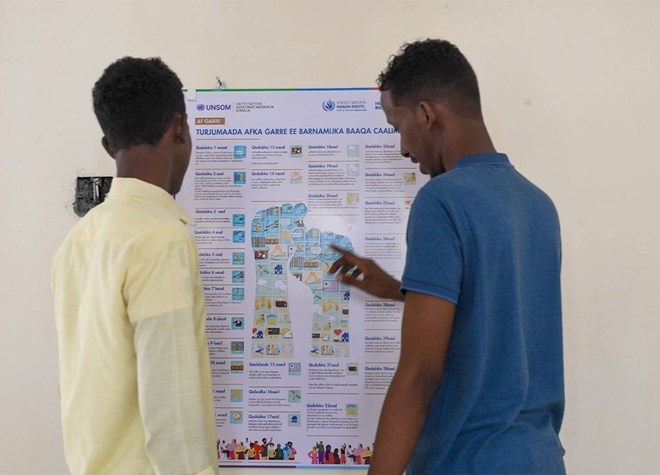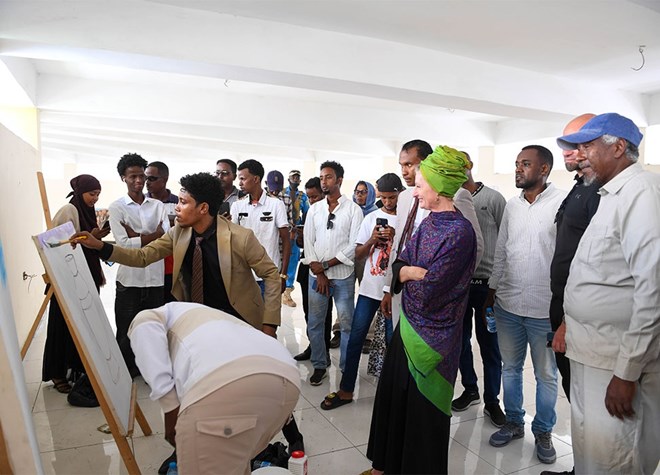
Sunday September 8, 2024
Visitors at the launch of the initiative to promote human rights across Somalia’s communities. © UNSOM
“All human beings are born free and equal in dignity and rights.”
The iconic opening sentence of the Universal Declaration of Human Rights and all the document’s articles are now available in seven more languages and dialects spoken across Somalia’s diverse communities as part of a multilingual initiative to make the cornerstone of human rights better known and understood in the Horn of Africa country.
advertisements
Supported by the United Nations Assistance Mission for Somalia (UNSOM) in collaboration with the National Museum of Somalia, the effort included translations into Af Maay, Baajuni, Chimini, Dabaare, Gare, Jiido and Maadoonte.The UDHR is the most translated document in the world, with more than 500 different translations, a testament to its universality more than 75 years since it was adopted.
“The Universal Declaration of Human Rights is inclusive, it is for everybody. The more inclusive we can be in ensuring it is available in different languages, the more inclusive it will be in terms of people understanding that these are their human rights and that they can claim them,” said Kirsten Young, Chief of UNSOM’s Human Rights and Protection Group, and the UN Human Rights Office's representative in Somalia.
Young was speaking at the initiative’s recent launch at the National Museum of Somalia in Mogadishu. The event was attended by community representatives and museum officials, and included an exhibit of local artwork reflecting the culture of the country’s linguistic communities.
Amina Mohamed Farah, a representative from the Jiido community, said making the UDHR available in various dialects was very important for promoting the universality of human rights and protecting the most vulnerable communities.
“My people can now better understand the universal human rights and will recognize the inhuman treatment against women, children and elderly women and the rights of the girl child,” she said.
Osman Geedow Amir, director of the National Museum, welcomed the project, saying it would help individuals and communities understand and take ownership of their rights in their local dialects.
“The public display, which includes the UDHR translated into various dialects, simplifies or localises human rights, which in Somalia have been at times overlooked,” Amir said.
Adopted by the UN General Assembly on 10 December 1948, the UDHR sets out for the first time fundamental human rights to be universally protected, and is recognized as having paved the way for the adoption of numerous human rights treaties applied today at global and regional levels.

Kirsten Young, Chief of UNSOM’s Human Rights and Protection Group, at the launch of the initiative to promote human rights across Somalia’s communities. © UNSOM.